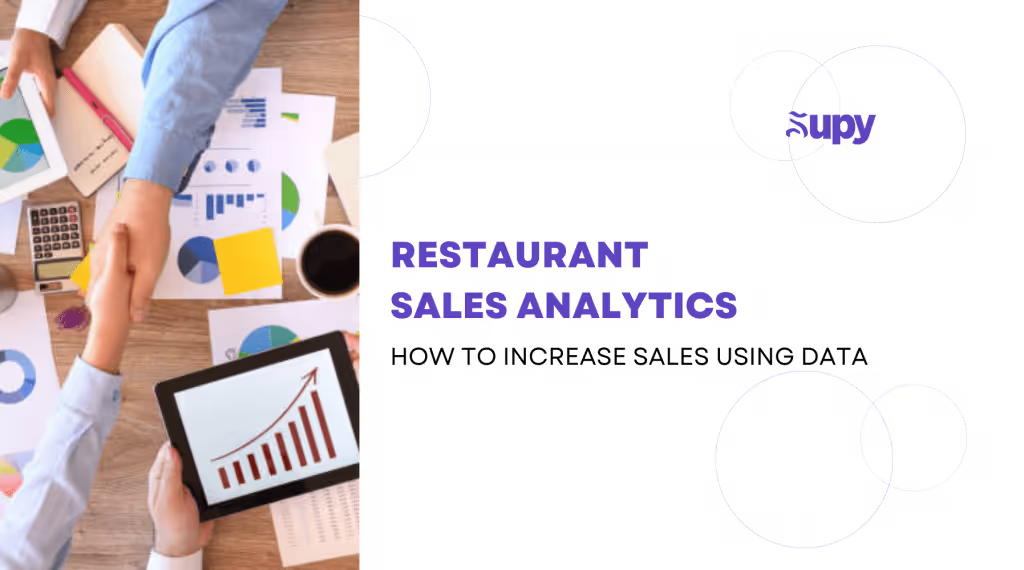Why Central Kitchens in Restaurants Are the Key to Consistent Quality?
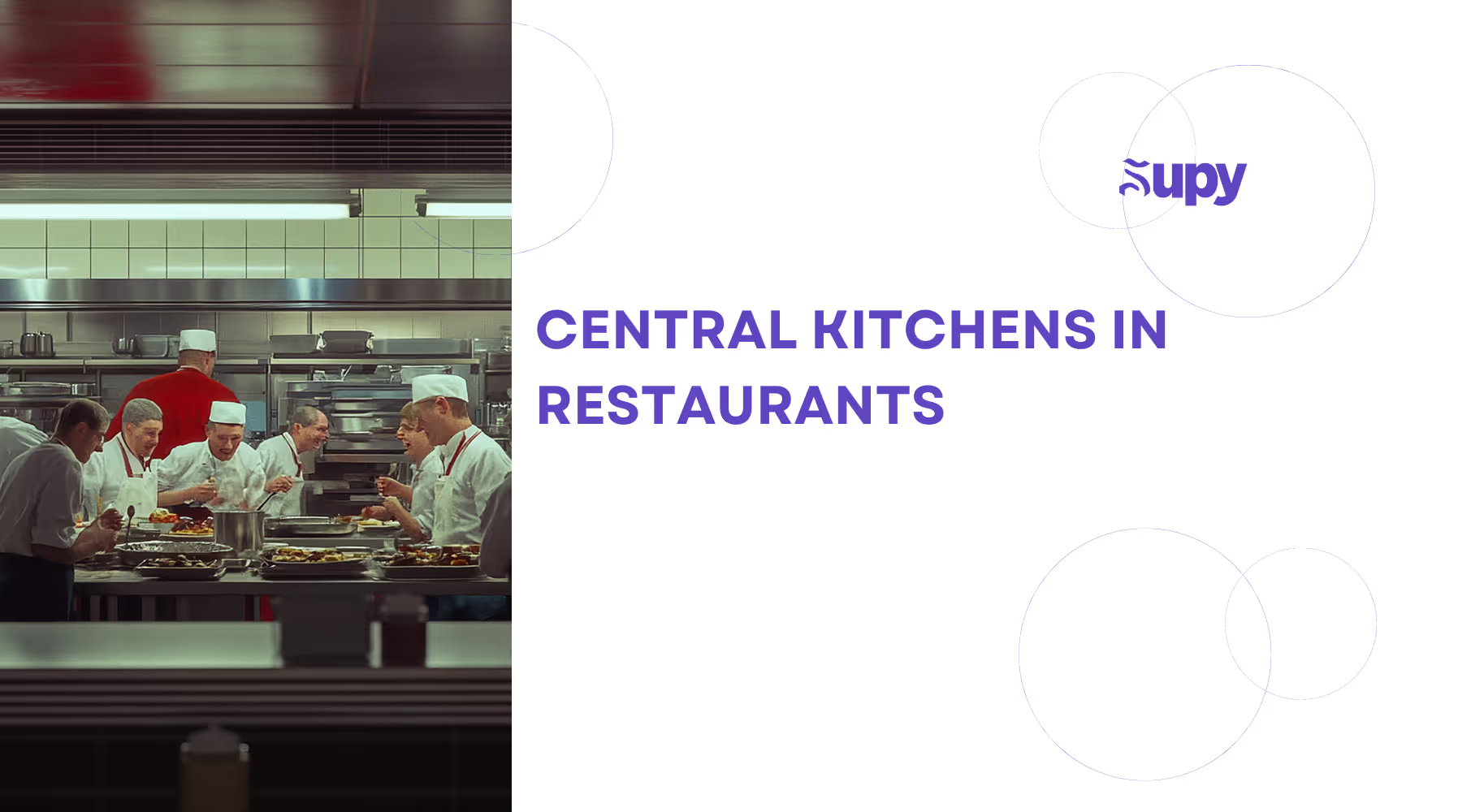
Running a multi-location restaurant chain comes with its challenges—chief among them is ensuring that every dish served meets the same high standards, regardless of the location. This is where central kitchens come into play, offering a streamlined approach to food preparation that enhances consistency and cuts costs. According to the National Restaurant Association, 86% of restaurant operators reported lower profit margins post-pandemic, pushing the need for more efficient operational models like central kitchens.
Central kitchens consolidate food prep into one hub, enabling restaurants to maintain uniformity in taste and quality across all their outlets. The benefits go beyond consistency; central kitchens can significantly reduce labor, training, and overhead costs, making them a vital tool for scaling operations while maintaining profitability.
In this article, we'll discover:
- Importance of Consistency Across Restaurants
- Streamlining Operations and Reducing Costs
- Central Kitchens as a Revenue Growth Tool
- Essential Technology Tools for Centralized Kitchens
- Conclusion
- About Supy
1. Importance of Consistency Across Restaurants
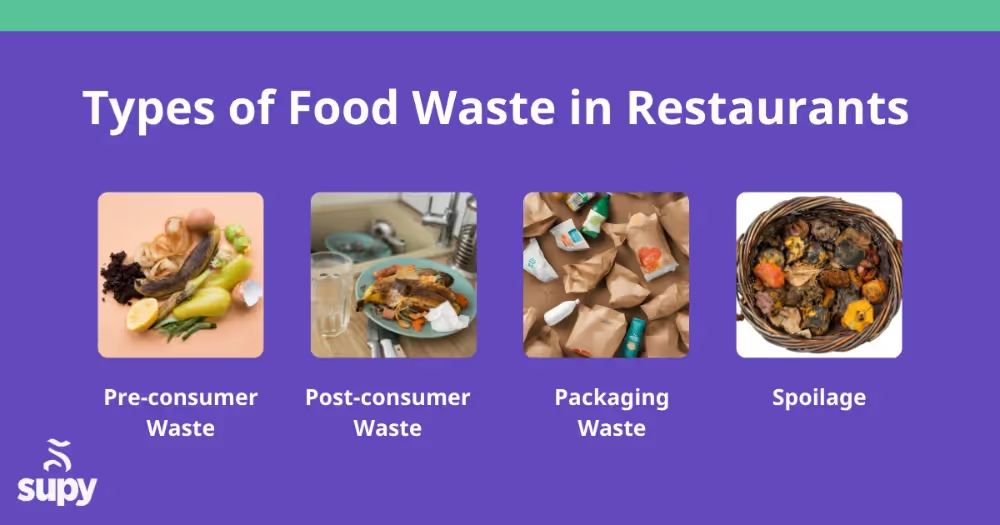
Consistency across multiple restaurant locations is crucial for maintaining customer loyalty and protecting your restaurant brand's reputation. According to a survey, 72% of customers say they would be likely to switch brands after just one bad experience. When customers visit any of your restaurant outlets, they expect the same taste, quality, and experience, no matter where they are. A lack of consistency can lead to customer dissatisfaction, negative reviews, and ultimately, a decline in business.
Why Consistency Matters:
- Brand Integrity: Consistency ensures that your restaurant brand delivers on its promise every time. Whether it’s the signature flavor of a dish or the presentation of a meal, maintaining uniformity reinforces brand identity and builds trust with customers across all restaurant outlets.
- Customer Satisfaction: When customers know they can rely on your restaurant company to deliver the same high-quality experience at any location, they are more likely to return. Consistent food quality, service, and ambiance lead to repeat business and positive word-of-mouth.
- Operational Efficiency: The central kitchen concept plays a significant role in maintaining consistency by centralizing control over food preparation processes. This reduces variability and errors, minimizing the risk of inconsistencies that can arise from different chefs interpreting recipes differently or using varying cooking techniques.
- Cost Control: Standardizing recipes and cooking methods across locations helps in controlling operating costs. It reduces waste, optimizes ingredient use, and ensures that each dish is produced with the same efficiency, contributing to better profit margins.
- Competitive Advantage: In a competitive market, consistency can set your restaurant brand apart. Customers are more likely to choose a restaurant they trust for a consistent experience over one that offers a gamble with every visit.
2. Streamlining Operations and Reducing Costs

In the competitive restaurant industry, efficiency and cost control are key to maintaining profitability. Central kitchens offer a powerful solution by streamlining operations and significantly reducing costs across multiple locations. By consolidating food preparation into a single hub, restaurant companies can achieve greater operational efficiency while cutting down on waste and unnecessary expenses.
Strategies for Streamlining Operations:
- Centralized Food Preparation: Central kitchens allow restaurant companies to prepare food in large batches at a central location, reducing the need for multiple kitchens to handle the same tasks. This centralization not only improves consistency but also speeds up the preparation process, allowing restaurants to serve more customers in less time.
- Bulk Purchasing: With a central kitchen, restaurants can purchase ingredients in bulk, which often leads to significant cost savings. Suppliers typically offer discounts on large orders, and bulk purchasing reduces the frequency of deliveries, cutting down on transportation costs and the carbon footprint of food trucks.
- Automated Processes: Implementing technology in central kitchens can automate various tasks such as inventory management, order processing, and even some aspects of food preparation. Automation reduces the need for manual labor, lowers the risk of human error, and ensures that operations run smoothly and efficiently.
- Optimized Labor Use: By centralizing food preparation, restaurants can reduce the number of staff needed at individual locations. Specialized teams in the central kitchen handle the bulk of the work, freeing up staff at each outlet to focus on customer service and other critical tasks. This streamlined approach not only cuts labor costs but also simplifies training and reduces turnover.
- Waste Reduction: Central kitchens can implement standardized procedures for food preparation, which minimizes waste. By accurately measuring ingredients and closely monitoring inventory, restaurants can reduce overproduction and spoilage, leading to lower food costs and a more sustainable operation.
Strategies for Cost-Reduction:
- Energy Efficiency: Central kitchens can invest in energy-efficient kitchen equipment that is used to its full potential, rather than duplicating these investments across multiple locations. This reduces energy consumption and lowers utility bills, contributing to long-term cost savings.
- Space Optimization: By moving the bulk of food preparation to a central kitchen, restaurants can reduce the kitchen space needed at each location. This frees up storage space and allows for more dining space, which can increase revenue, or smaller real estate investments, which lower rental costs.
- Vendor Negotiations: With higher volume orders, central kitchens have more leverage to negotiate better terms with suppliers. This can lead to lower prices, extended payment terms, or other favorable conditions that reduce overall costs. Additionally, central kitchens can manage inventory more effectively by consolidating individual site sales forecasts, ensuring that each restaurant has the right amount of stock without overordering.
- Supporting Ghost Kitchens: Central kitchens can also serve as the backbone for ghost kitchens, which operate as delivery-only outlets. By using a central location to prepare food for multiple virtual brands, restaurant companies can maximize the use of their commercial kitchen and reduce the initial investment required to expand their reach.
3. Central Kitchens as a Revenue Growth Tool
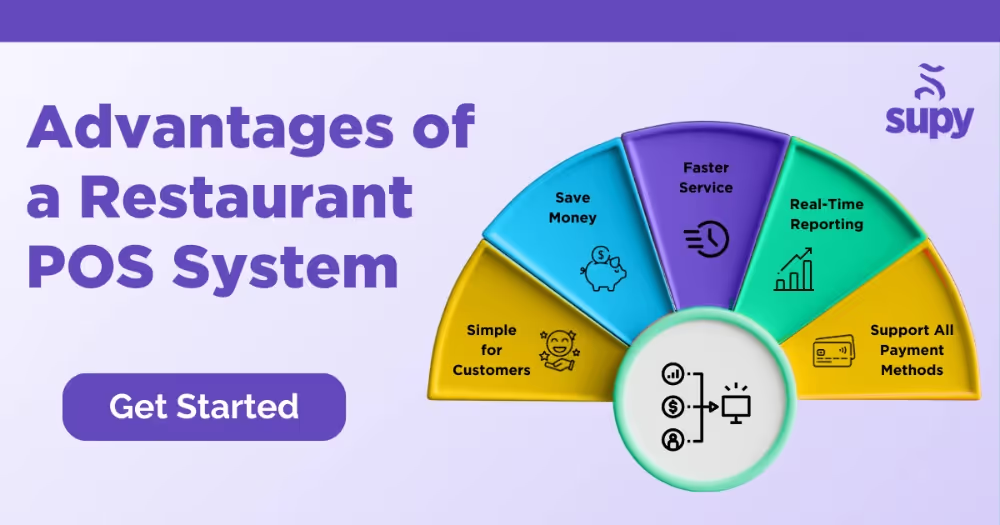
Central kitchens aren't just about improving efficiency—they can also serve as powerful revenue growth tools for multi-location restaurants. By consolidating food production and streamlining operations, restaurants with their central kitchen open up new avenues for increasing sales and expanding their brand's reach.
Expanding into New Markets
Expanding a restaurant operation is made easier with central kitchens. With a centralized hub, it's simpler to launch new locations or expand into new markets because the bulk of the food preparation is already taken care of in the prep kitchen. This means new outlets can be smaller, more focused on service, and quicker to set up, leading to faster growth and reduced overhead. Additionally, centralizing food production helps anticipate sales demand more accurately, ensuring each location is well-prepared without overstaffing or excessive inventory.
Diversifying Revenue Streams
Beyond serving restaurant locations, central kitchens can support additional revenue streams like catering, retail product lines, and even virtual brands. For instance, a central kitchen can produce signature sauces or ready-made meals that are sold in retail stores or online. This not only increases brand visibility but also provides a steady flow of income outside the traditional restaurant business. By leveraging line central kitchens, restaurants can also produce food for other restaurants, creating partnerships that further expand operations and revenue.
Catering and Event Services
With the ability to produce large quantities of food consistently, central kitchens are ideally suited for catering services. Restaurants can tap into the lucrative catering market by offering high-quality, consistent meals for events, corporate functions, and private parties. This diversification helps stabilize revenue, especially during off-peak times for the restaurant itself. Centralized production ensures that catering operations deliver great food without compromising the guest experience at the restaurant’s main outlets.
Supporting Virtual Brands
The rise of virtual brands—restaurant concepts that exist solely for delivery—presents another opportunity for revenue growth. Central kitchens can efficiently manage the production of multiple brands under one roof, maximizing the use of kitchen space and resources. This approach allows restaurants to experiment with different cuisines or target specific customer segments without the need for additional physical locations. By consolidating these operations into a single prep kitchen, restaurants can increase efficiency and profitability across all their ventures.
4. Essential Technology Tools for Centralized Kitchens
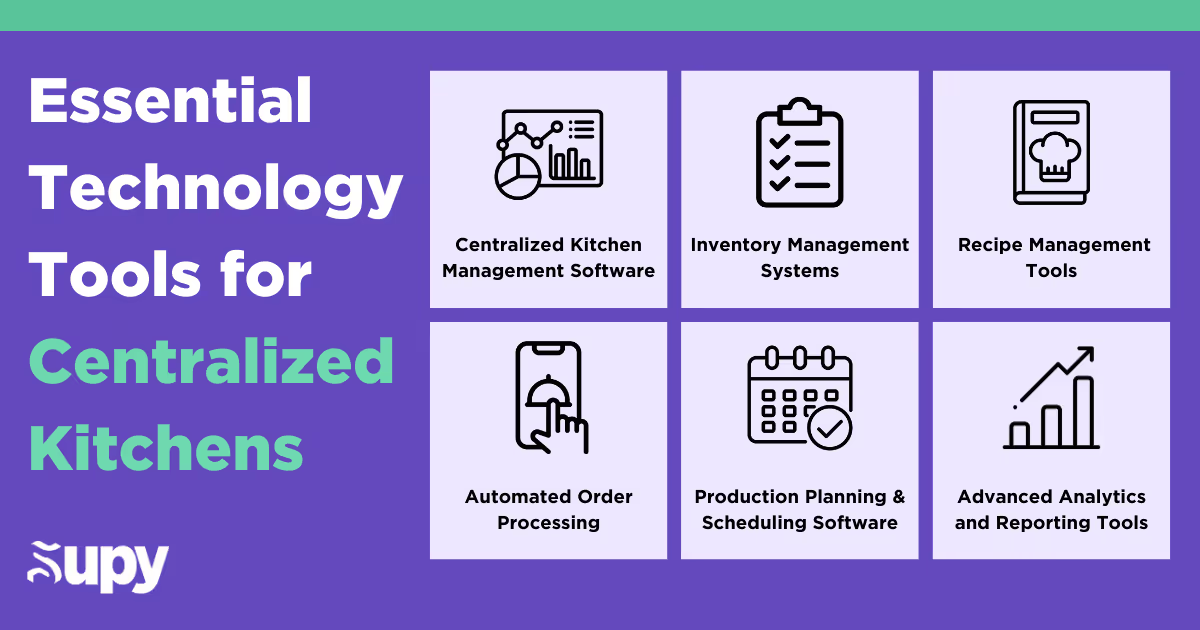
Technology plays a key role in the success of centralized kitchens, enabling restaurants to optimize their operations, maintain consistency, and drive profitability. The right tools can streamline everything from inventory management to food production, ensuring that the central kitchen runs smoothly and efficiently.
1. Centralized Kitchen Management Software
Centralized kitchen management software serves as the backbone of a well-organized kitchen. This superior restaurant technology integrates all aspects of kitchen operations, from inventory tracking to production scheduling.
By providing real-time data on stock levels, usage rates, and expiry dates, this software allows kitchen managers to make informed decisions, reducing waste and improving product quality. It also helps coordinate production with demand forecasts, ensuring the kitchen prepares the right amount of food at the right time.
2. Inventory Management Systems
Effective inventory management is crucial for minimizing waste and controlling costs in a central kitchen. Systems like Supy offer real-time tracking of ingredients, automate reordering processes, and provide alerts when stock levels are low.
These systems also help manage bulk purchases, ensuring that ingredients are used efficiently and do not go to waste. Monitoring inventory across multiple locations from a single platform is invaluable for maintaining consistency and reducing overhead.
3. Recipe Management Tools
Consistency in food preparation is key to maintaining brand integrity across multiple locations. Recipe management tools digitize and standardize recipes, ensuring that every dish is prepared the same way, regardless of the location.
These tools also allow for easy updates to recipes, which can be instantly shared across all outlets. By maintaining control over recipes, restaurants can ensure that their signature dishes retain their quality and flavor, no matter where they are served.
4. Automated Order Processing
Automation in order processing, facilitated by tools like or, can significantly reduce the time and effort required to manage supply orders. With automated systems, central kitchens can streamline the procurement process, reducing the risk of human error and ensuring that all orders are accurate and timely. This technology not only improves efficiency but also helps maintain a smooth supply chain, which is essential for meeting customer demands consistently.
5. Production Planning and Scheduling Software
Central kitchens handle large volumes of food production, making efficient scheduling essential. Production planning software like Trello or Asana allows kitchen managers to optimize production schedules based on demand forecasts, ensuring that resources are used effectively.
This software helps in balancing workloads, reducing downtime, and preventing bottlenecks in the kitchen. By aligning production with actual demand, restaurants can minimize waste and improve their overall efficiency.
6. Advanced Analytics and Reporting Tools
Data-driven decision-making is critical in a central kitchen environment. Advanced analytics tools provide insights into kitchen operations, from ingredient usage patterns to labor efficiency.
These tools help identify areas for improvement, track key performance indicators (KPIs), and support long-term strategic planning. With detailed reporting, kitchen managers can make informed decisions that enhance productivity and profitability.
7. Communication and Collaboration Platforms
Effective communication is vital for the smooth operation of a central kitchen, especially when coordinating with multiple restaurant locations. Communication platforms like Slack or Microsoft Teams enable real-time collaboration between kitchen staff, suppliers, and restaurant managers. These tools ensure that everyone is on the same page, reducing the likelihood of errors and improving the overall efficiency of the kitchen.

5. Conclusion
Central kitchens offer a powerful solution for restaurant chains looking to maintain consistent quality, control costs, and expand their operations. By centralizing food preparation and leveraging advanced technology, restaurants can streamline operations, minimize waste, and explore new revenue opportunities, all while ensuring that every dish meets the high standards that customers expect. As the restaurant industry faces ongoing challenges, adopting central kitchen strategies will be crucial for sustaining growth, improving efficiency, and staying competitive in the market.
6. About Supy
In the world of centralized kitchens, where consistency and efficiency are paramount, Supy stands out as an essential tool for restaurant operators. Supy’s inventory management software helps streamline operations by providing real-time tracking of ingredients, automating reordering processes, and offering advanced analytics that ensures every dish meets the same high standards across all locations. Whether you're looking to reduce waste, improve profitability, or maintain consistency, Supy empowers your central kitchen to perform at its best.
Ready to see how Supy can transform your operations? Book a demo today!




